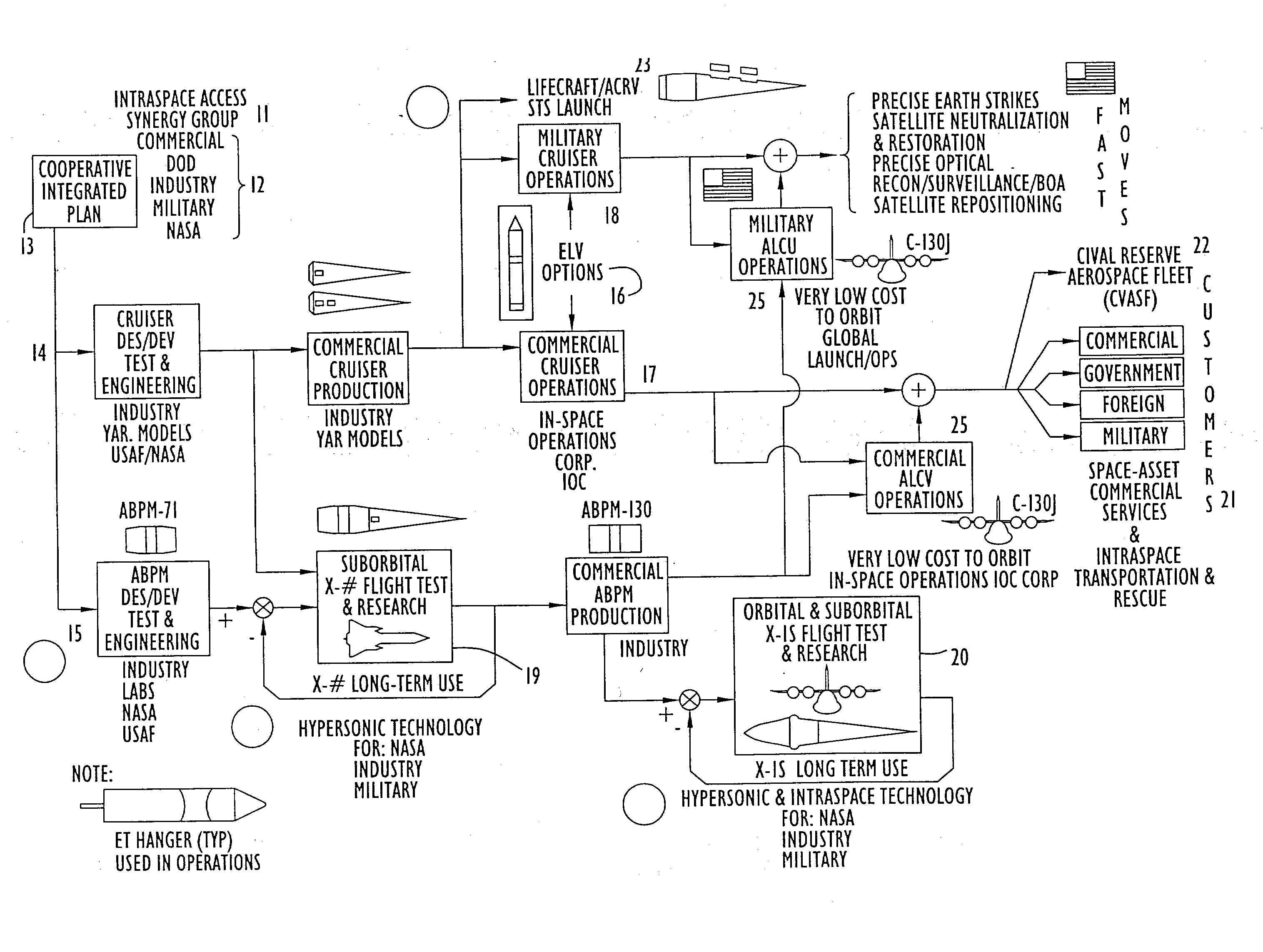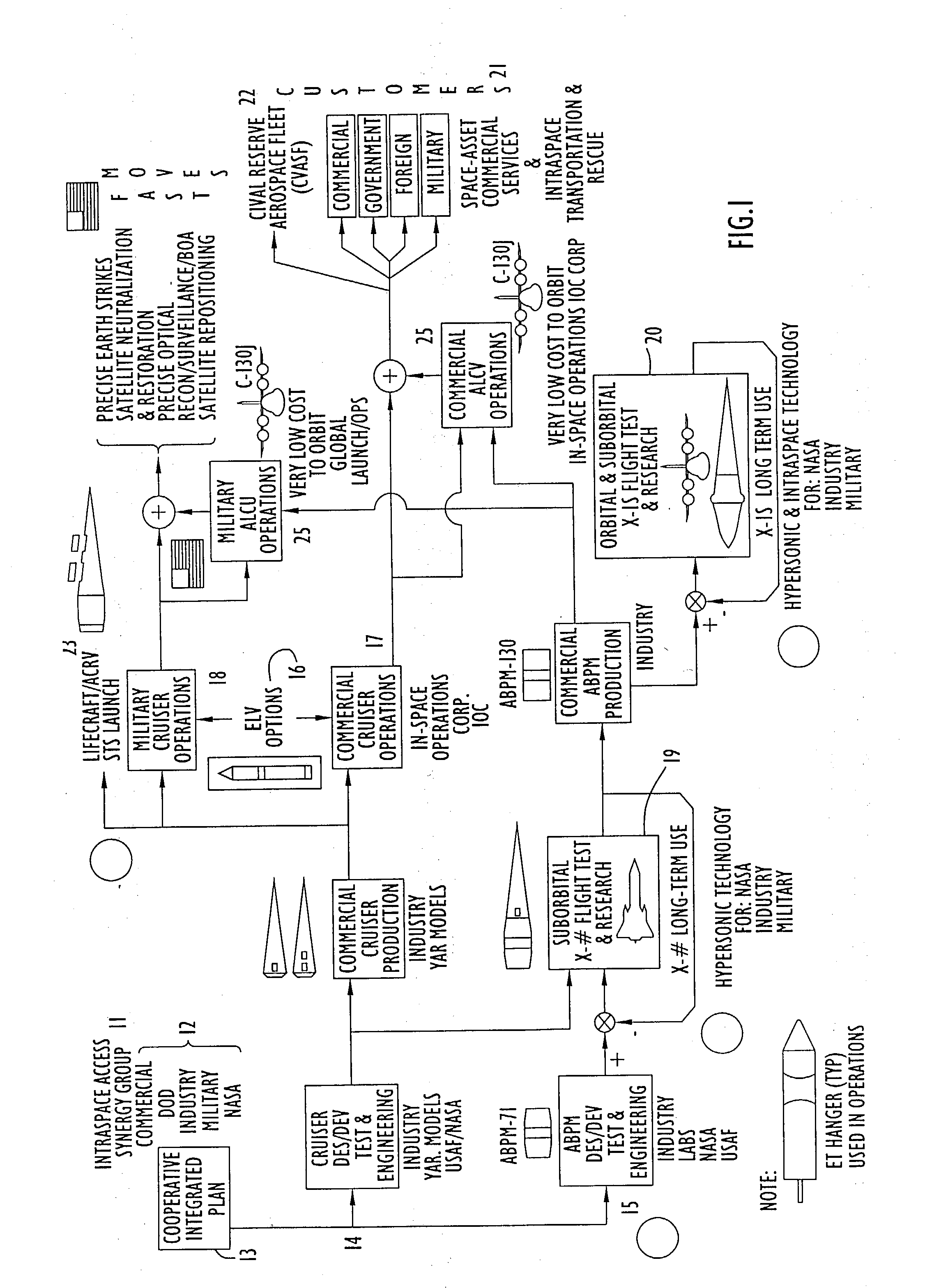Container cabin for orbital vehicle
a cargo cabin and orbital vehicle technology, applied in the field of air breathing hypersonic propulsion modules, can solve the problems of low orbital cost, unobtainable degree of operational flexibility and responsiveness, and limited intra-space maneuverability
- Summary
- Abstract
- Description
- Claims
- Application Information
AI Technical Summary
Benefits of technology
Problems solved by technology
Method used
Image
Examples
Embodiment Construction
: (Circular orbits except GTO) Commercial 2-stage Delta 6920 Florida (ESMC) 1 crewmember 2050 nmi circular & recover (i = 28.7) (Cruiser propellant limited by Delta 6920 throw weight) 2 crew members 1950 nmi circular & recover (i = 28.7) Commercial 2-stage Delta 7920 at ESMC 1 crewmember 2900 nmi circular & recover (i = 28.7) 2 crewmember 2550 nmi circular & recover (i = 28.7) 1 or 2 crew members to geosynch. transfer orbit (GTO) Commercial Delta 6920 California (WSMC) polar orbit 1 crewmember 1000 nmi (Throw weight limited) 2 crewmember 950 nmi (Throw weight limited) Commercial Delta 7920 at WSMC polar orbit 1 crewmember 1825 nmi (Throw weight limited) 2 crewmember 1740 nmi (Throw weight limited) Commercial Delta 6920 WSMC Sun-synchronous (i = 98.7) 2 crewmember 725 nmi Commercial Delta 7920 WSMC Sun-synchronous (i = 98.7) 1 crewmember 1585 nmi 2 crewmember 1510 nmi Potential lowest cost launch system Air Launch Cruiser Vehicle (ALCV) with launch price goal of $1-2 Million. Interna...
PUM
 Login to View More
Login to View More Abstract
Description
Claims
Application Information
 Login to View More
Login to View More - R&D
- Intellectual Property
- Life Sciences
- Materials
- Tech Scout
- Unparalleled Data Quality
- Higher Quality Content
- 60% Fewer Hallucinations
Browse by: Latest US Patents, China's latest patents, Technical Efficacy Thesaurus, Application Domain, Technology Topic, Popular Technical Reports.
© 2025 PatSnap. All rights reserved.Legal|Privacy policy|Modern Slavery Act Transparency Statement|Sitemap|About US| Contact US: help@patsnap.com



